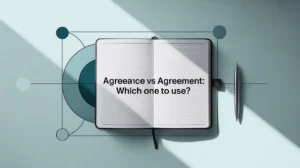Language is a beautiful, complex thing—but it can also be confusing. Especially when you’re writing a report or sending an email and suddenly your spell checker underlines totalling in red. Or is it totaling? Are both correct? Is one more “proper” than the other?
If you’ve ever found yourself second-guessing this word, you’re not alone. Whether you’re a student, content creator, professional writer, or just a careful communicator, spelling differences like totalling vs. totaling can trip you up. What makes it even more confusing is that both versions are technically correct—depending on where you’re writing from.
This article will clear it all up. We’ll explore what each spelling means, where each is used, why there’s confusion, and how to know which to use in different situations. Along the way, we’ll also give examples, alternatives, and a quick-reference spelling table you can bookmark for later.
By the end, you’ll not only know the difference—you’ll never hesitate again.
What Do “Totalling” and “Totaling” Actually Mean?
At the core, both totalling and totaling are the same word—just spelled differently depending on your region.
The verb to total means to add up numbers or amounts, or to reach a final sum. It can also refer to damaging something beyond repair, especially in casual American English (e.g., “He totaled his car”).
Here’s a breakdown:
- As a verb:
The accountant is totaling the expenses for the month.
She’s totalling the points for each team. - As an adjective (in phrases):
The damage was a total loss.
They gave a total of 4 presentations.
Both spellings function identically in grammar and usage. The only real difference? Where you’re using them.
“Totalling” vs. “Totaling”: What’s the Real Difference?
The short answer:
“Totalling” is British English. “Totaling” is American English.
Let’s explore why that is.
British English Rules (Double the L)
In British English, there’s a spelling rule that causes certain verbs to double the final consonant when adding -ing or -ed. The rule usually applies when:
- The verb ends in a single consonant after a single vowel
- The final syllable is not stressed
Since to-tal doesn’t stress the last syllable, and it ends in l, Brits double the l when adding suffixes:
- travel → travelling
- cancel → cancelled
- model → modelling
- total → totalling
So, if you’re writing for a UK audience, totalling is the correct form.
American English Rules (Drop Extra L)
In contrast, American English tends to simplify spelling. The rule for Americans is this:
Only double the consonant if the final syllable is stressed.
Because total has its stress on the first syllable (TO-tal), Americans keep it simple:
- travel → traveling
- cancel → canceled
- model → modeling
- total → totaling
Table: British vs. American Spelling Rules for -ing Verbs
| Base Verb | British English | American English |
| Total | Totalling | Totaling |
| Cancel | Cancelling | Canceling |
| Travel | Travelling | Traveling |
| Label | Labelling | Labeling |
| Model | Modelling | Modeling |
Why Is There Confusion Between “Totalling” and “Totaling”?
There are a few reasons this particular spelling throws people off:
Global Communication is Blurring the Lines
With the internet, social media, and remote work, many people write for a global audience. That means you’re constantly seeing both versions of the word—often in the same day. One blog might use totalling, while a company site might use totaling.
Spell Check Tools Default to One Version
Most spell checkers (like Grammarly or Microsoft Word) default to American spelling unless you manually switch to UK or Australian English. That means totalling will get flagged even though it’s perfectly correct in the UK, Australia, and Canada.
Style Guides and Formatting Conflicts
Different industries and organizations follow different style guides. If you’re writing an academic paper, your professor might prefer one version. If you’re in corporate marketing, your company’s brand guidelines may say otherwise.
When Should You Use “Totalling” or “Totaling”?
Here’s how to decide which to use:
If You’re Writing for a US Audience:
Use totaling. This includes American schools, businesses, and most websites headquartered in the United States.
If You’re Writing for a UK, Australian, or Canadian Audience:
Use totalling. These regions follow British English spelling conventions.
In Academic and Professional Writing:
Always check the style guide you’re using. For example:
- APA Style (used in US academia): Use totaling
- The Guardian or The Economist style guides (UK): Use totalling
- Oxford or Cambridge University Press: Use British spelling by default
If You’re Writing for the Internet (Global Content):
Choose one and stick with it consistently. Consistency is more important than choosing one over the other.
Examples of “Totalling” and “Totaling” in Sentences
Let’s look at both spellings in real-world context.
“Totalling” in Sentences (British English)
- The invoices were totalling nearly £15,000 by the end of the quarter.
- She kept a running list, totalling her daily expenses down to the last penny.
- The damage to the property was totalling more than they expected.
- They published results from 12 experiments, totalling over 1,200 participants.
- The fleet of cars, totalling 50 in number, was recalled for inspection.
“Totaling” in Sentences (American English)
- The expenses for the project were totaling over $25,000.
- They analyzed surveys totaling more than 10,000 responses.
- He crashed his vehicle, completely totaling it.
- The job cuts are totaling more than 500 workers.
- Their donations are totaling over $1 million this year.
Synonyms and Related Words for “Totalling” or “Totaling”
If you want to switch up your word choice, here are some handy alternatives:
| Synonym | Context | Example |
| Summing | Formal or technical writing | She’s summing the results. |
| Adding up | Conversational, casual tone | He’s adding up the bills. |
| Tallying | Counting or listing individually | They’re tallying the survey responses. |
| Calculating | Analytical or numerical contexts | We’re calculating the totals. |
| Aggregating | Grouping or compiling data | Data from five regions are aggregated. |
Other Common US vs. UK Spelling Differences
This confusion isn’t limited to just totalling vs. totaling. There are dozens of spelling differences between American and British English.
Here’s a quick-reference table:
| British English | American English |
| Totalling | Totaling |
| Travelling | Traveling |
| Cancelled | Canceled |
| Labelled | Labeled |
| Fuelled | Fueled |
| Centre | Center |
| Colour | Color |
| Organisation | Organization |
📌 Pro tip: If you’re ever unsure, Google the phrase using both spellings and see which version dominates in your target region.
How to Choose the Correct Spelling in Your Writing
If you’re still unsure, follow these tips:
- Check your location settings: Make sure your spell checker is set to the correct version of English.
- Consider your audience: Who are you writing for? If you’re submitting a report to a UK-based company, go with British spelling.
- Stick to one style: Mixing both totalling and totaling in the same document looks unprofessional.
- Use a style guide: Refer to trusted guides like:
- APA Style
- Chicago Manual of Style
- Oxford Style Manual
Final Thoughts: Totalling or Totaling?
At the end of the day, both spellings are correct—as long as you use them in the right context. The most important thing isn’t which one you pick, but that you stay consistent and understand your audience.
If you’re writing in the U.S., stick with totaling. If you’re writing in the U.K., totalling is the way to go. And if you’re writing for an international audience? Pick one style, explain your choice if needed, and keep it uniform throughout.
Quick Recap:
- Totalling = British English
- Totaling = American English
- Both mean the same thing
- Use based on region or style guide
- Consistency is key
Need a quick reference? Bookmark this table:
| Use This If You’re In… | Correct Spelling |
| United States | Totaling |
| United Kingdom | Totalling |
| Canada | Totalling |
| Australia | Totalling |
| Global/Online Content | Either—just be consistent |
Let me know if you’d like a visual infographic or downloadable PDF version of this guide added to the article!

Emma Rose is an experienced English educator, writer, and language enthusiast dedicated to helping learners unlock the full power of the English language. At SynoEnglish, she shares practical grammar tips, clear explanations, and real-world language insights to make learning both effective and enjoyable. With a passion for words and a love for clarity, Emma’s goal is to help readers speak and write with confidence.



